A Straightforward Gym Workout Routine For Beginners
This tried-and-tested approach to working out in the gym is perfect for beginners – it’s flexible, easy to remember and progress comes quickly
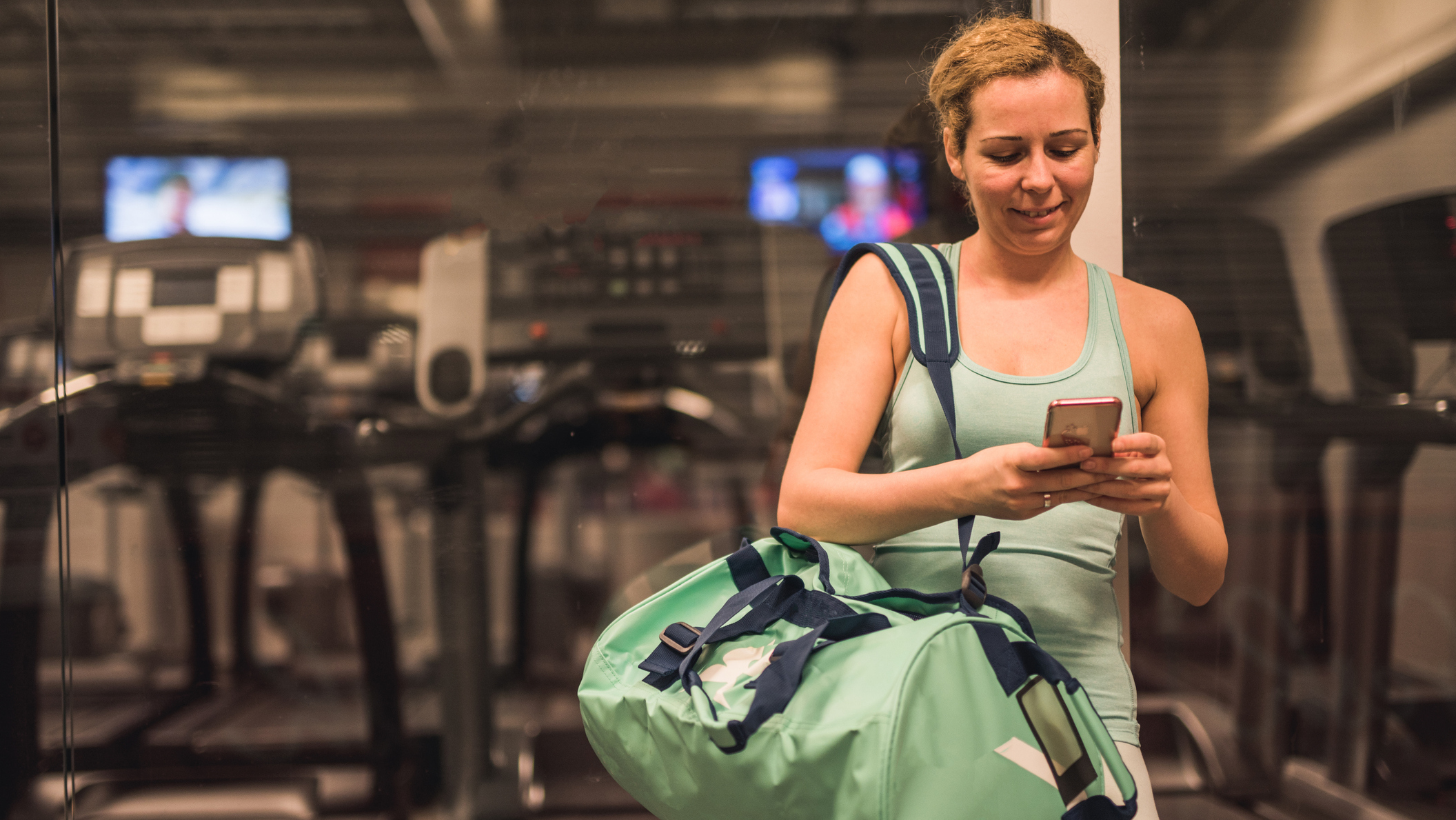
The first time you go to the gym it can be an intimidating place, and many people will arrive without a clear plan of what to do in their first workouts. Or perhaps, they’ve arrived clutching a gym workout routine more suited to experienced gym-goers who have graduated to what is called a body-part split, which is when you target muscle groups on different days of the week. Trying to follow that type of routine from the off is more likely to lead to unpleasant muscle soreness and a loss of motivation than anything else, so it pays to train in a way that’s right for your level.
“The mistake I see most beginners make is following routines that are too advanced for them,” says Dan Forbes, a strength and conditioning coach. “Doing complex split routines, where you divide your weekly workouts into body-part sessions, as a beginner is like using a sledgehammer to open a nut. They build too much fatigue, which impedes the body’s learning process, increases recovery time and slows progress.”
We have a gym machine workout plan for beginners we can recommend, as well as a cross-trainer plan for beginners, but for those who are keen to get going in the weights room Forbes has just the thing.
“One go-to routine for beginners is the ‘one set of 20’ routine created by Dr Michael Yessis,” says Forbes. “The concept is simple. Select one exercise per body part, choose a weight that you can do 20 reps with and get after it. The next time you go to the gym you perform the same routine with only one instruction: beat your last session. A couple of extra reps, the next size dumbbell up – whatever it is, you must make progress.
“As every guy who’s been training for a few years knows, the first year or two in the gym is a special time, when it’s possible to make progress each and every session. Those ‘newbie’ gains are glorious, and the best ways to capitalise on them are to get moving properly and work hard.
“I have clients do this until they fail to make progress for two sessions in a row. Then I drop the reps to 14 and repeat, then I drop them to ten reps – and only then do I introduce multiple sets. This approach will let you make progress every session. Who doesn’t love that?”
Beginner Gym Workout
Here’s a workout to tackle on your first trip to the gym following the simple formula of one set of 20 reps for a variety of exercises that work the entire body. The next time you give it a go, you should be trying to increase the difficulty with more reps or weight, or swap out some of the exercises for new ones.
Get the Coach Newsletter
Sign up for workout ideas, training advice, reviews of the latest gear and more.
1 Goblet squat (legs)
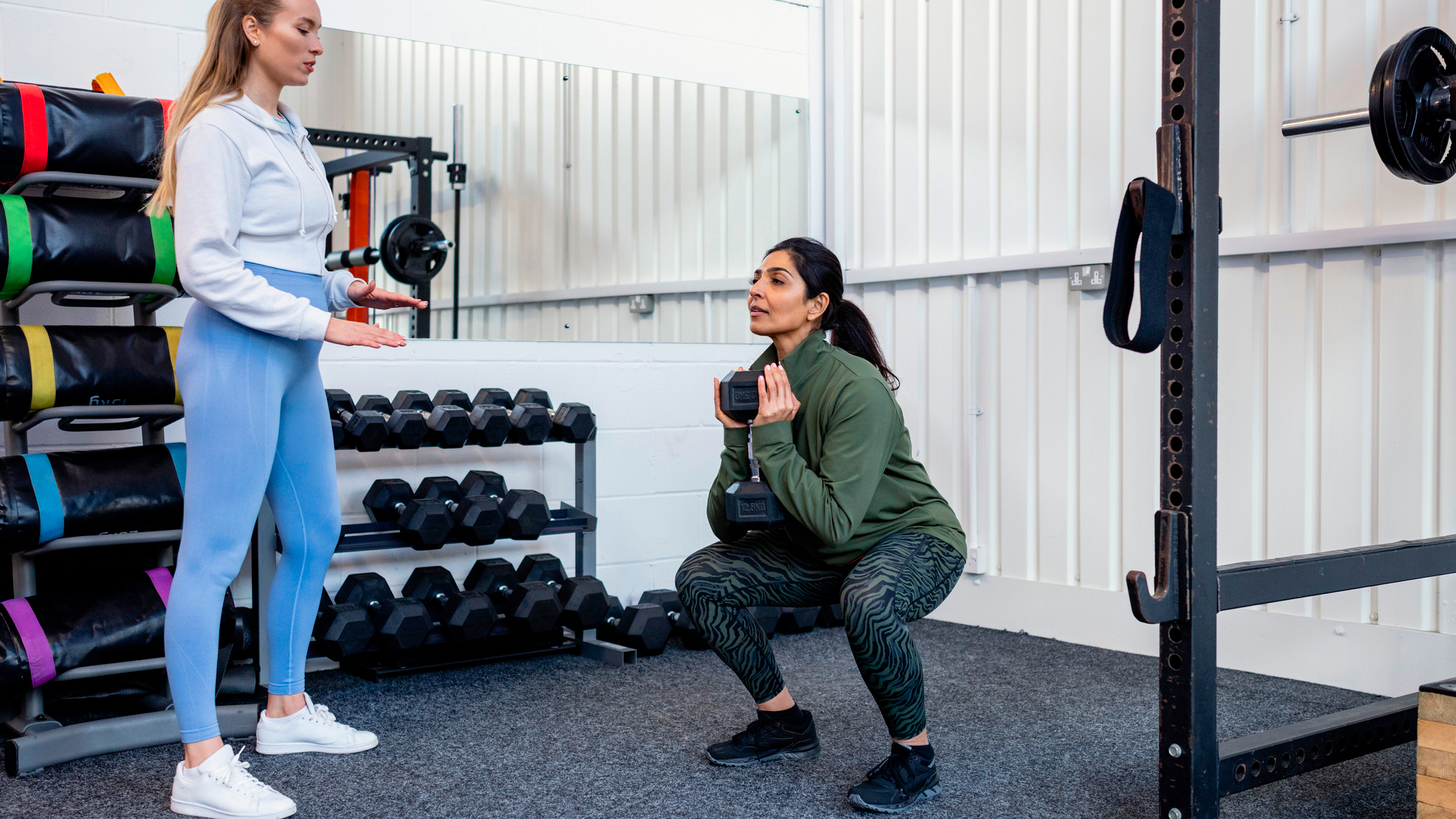
This terrific exercise not only works all the major muscle groups in the lower body, but also helps you to develop good form that will carry through to barbell squats if you progress that far. Hold a weight like a kettlebell or dumbbell against your chest with your hands up and elbows pointing down, then drop into a squat until your thighs are at least parallel to the ground. Then drive back up.
More leg exercises to try
Glute bridge (glutes)
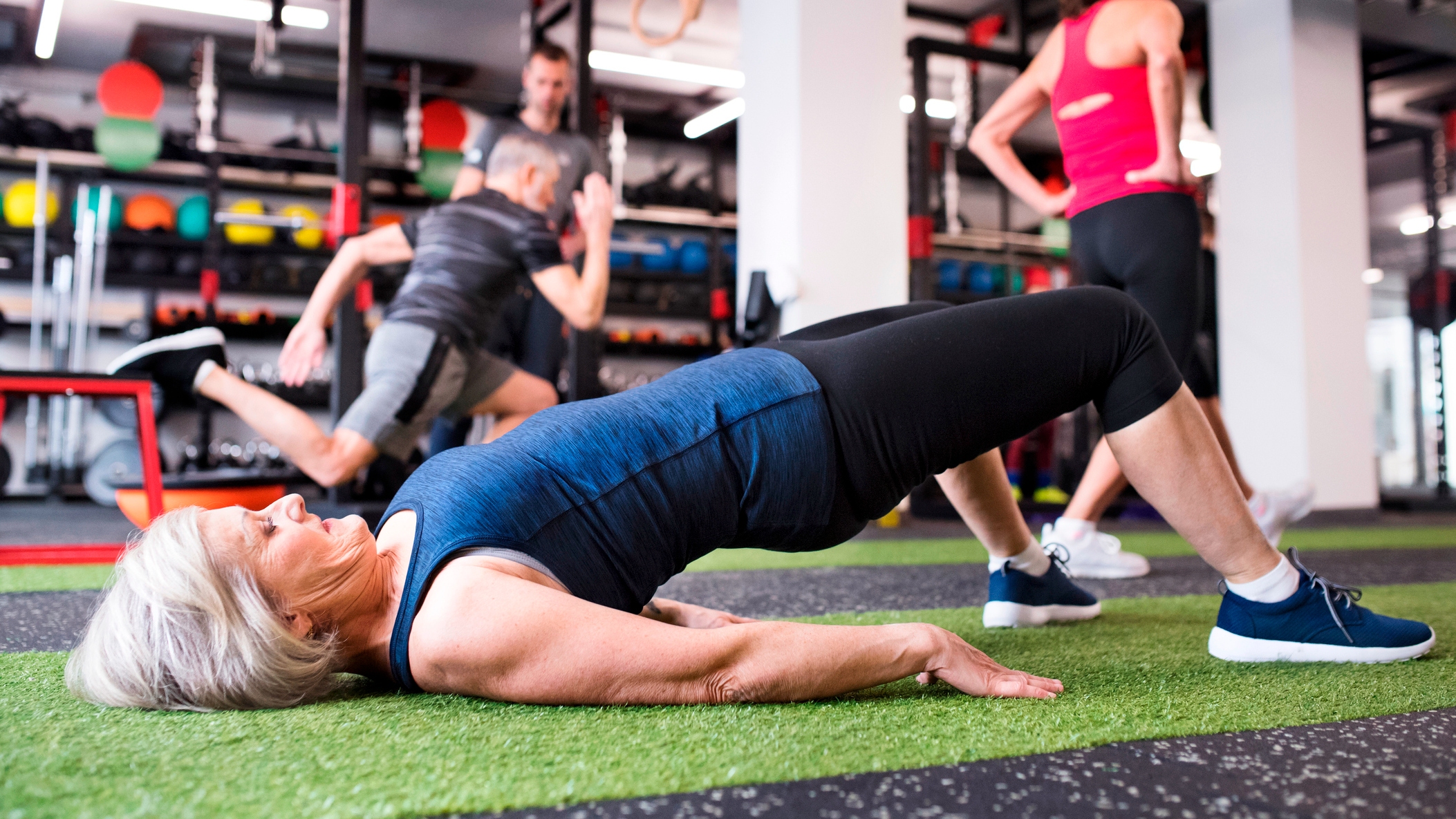
This bodyweight exercise is a great way for beginners to activate their glutes (the surprisingly massive muscles in your backside). Lie on your back with your knees bent and feet flat on the floor. Squeeze your glutes and raise your hips so your body forms a straight line from your knees to your shoulders. Pause for a beat and squeeze the glutes again, then lower back to the start.
More glutes exercises to try
Dead bug (core)
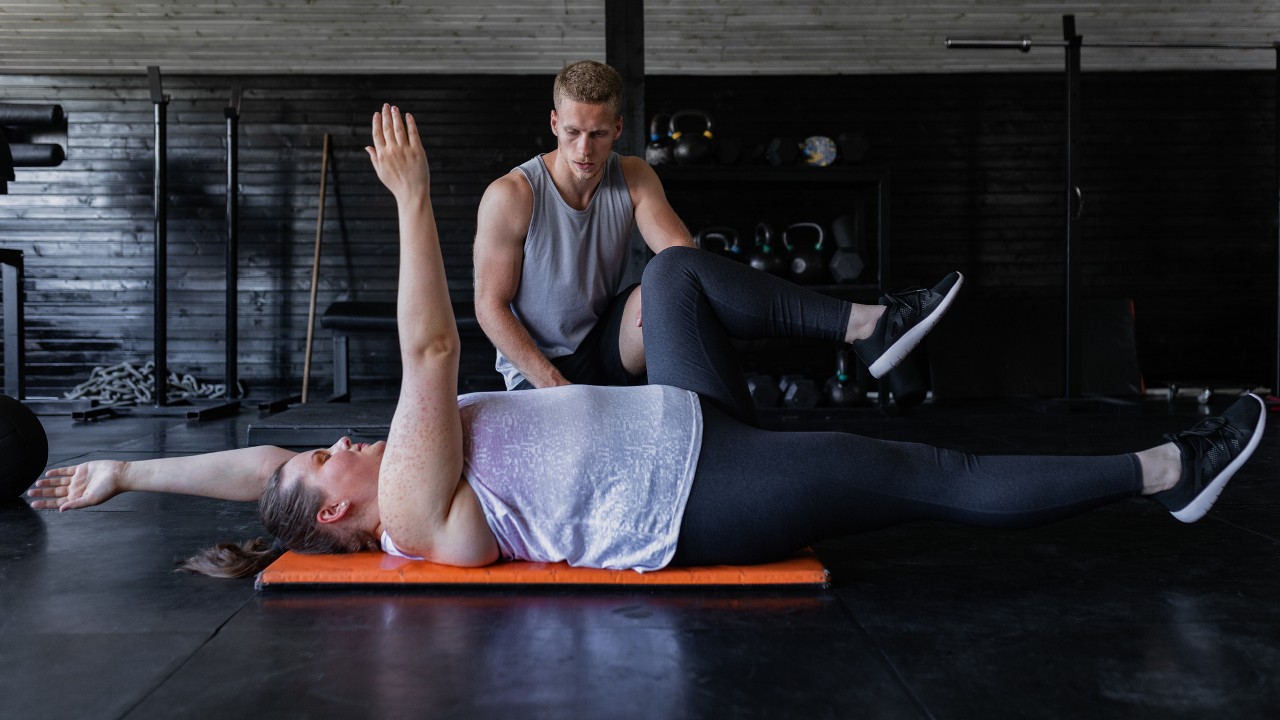
Lie on your back with your arms extended towards the ceiling and your legs raised with knees bent at 90°. Lower your right arm behind your head and your left leg until both limbs are straight and hovering just above the floor. Then raise them again and do the same with the opposite limbs. Do ten reps on each side for a total of 20.
More core exercises to try
Incline press-up (chest)
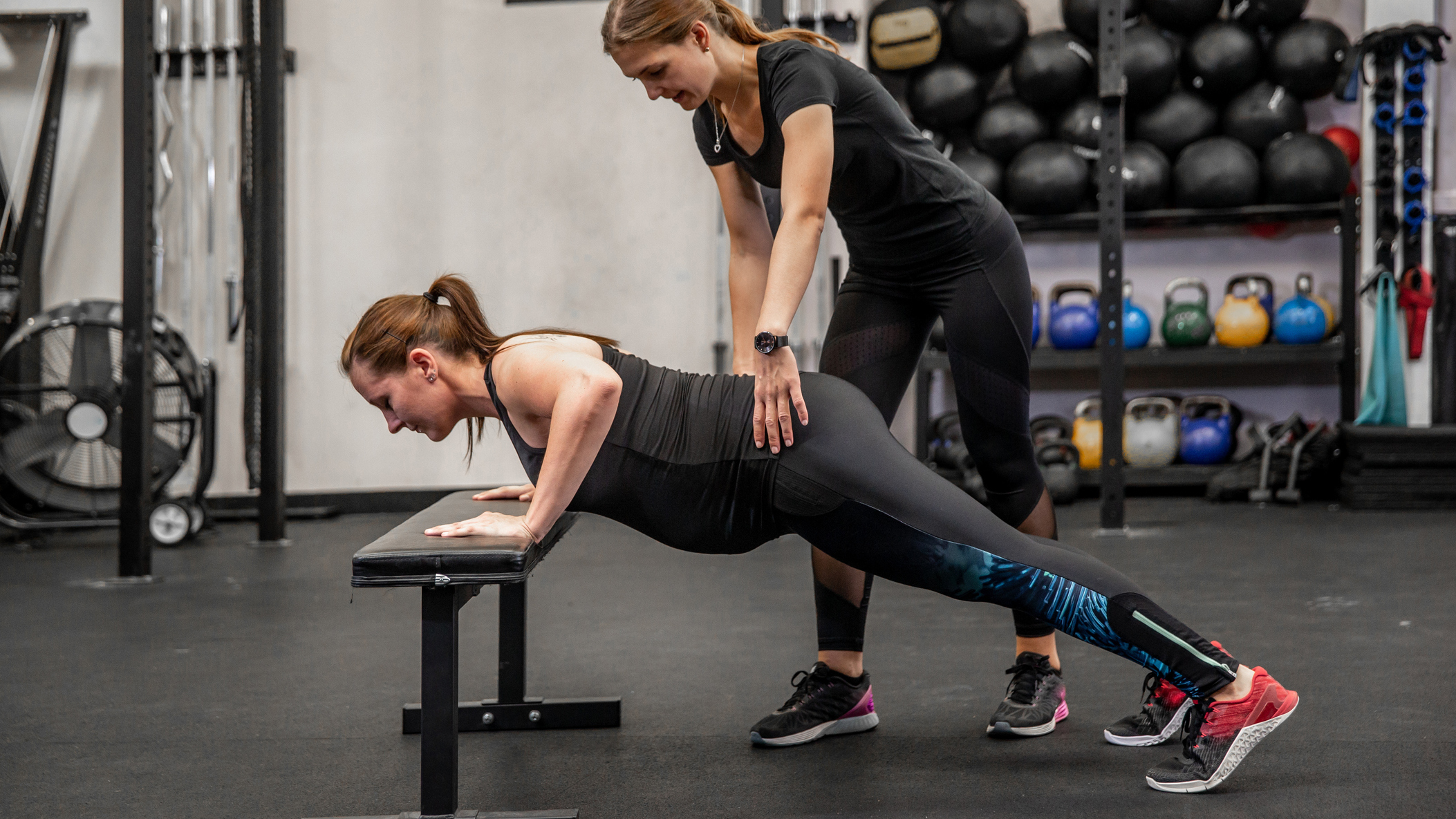
If you’re feeling confident you can go straight into a full press-up, but a good option for beginners is to start your hands on an elevated surface like a bench. From there perform a press-up as normal, lowering your chest towards your hands, then pushing back up.
One-arm dumbbell row (back)
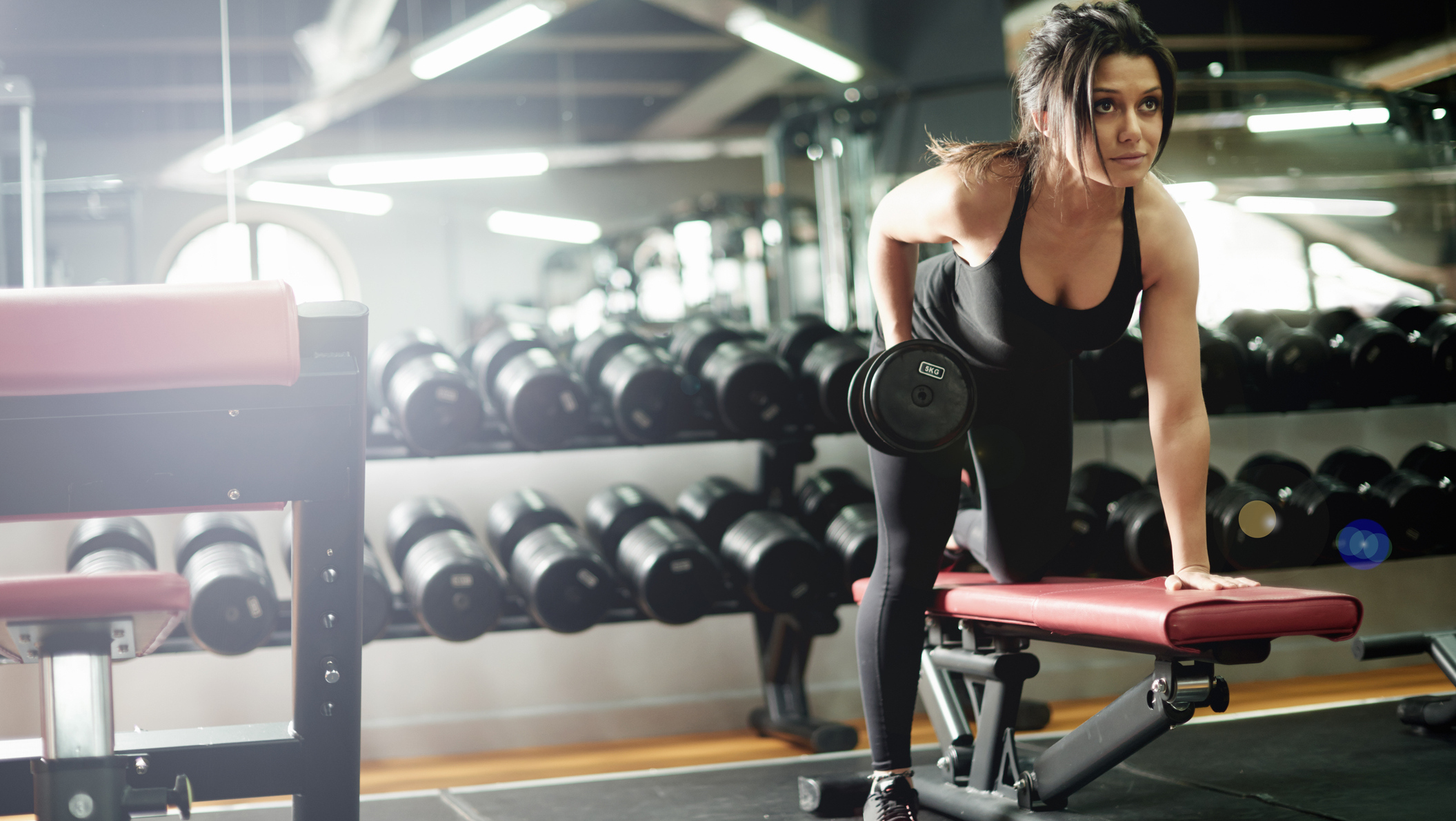
Place your left knee and left hand on a flat weights bench, with your back parallel to the bench, holding a dumbbell or kettlebell in your right hand. Brace your core and lift the weight to your ribcage, drawing your elbow up and past your torso. Pause, then lower the weight under control. Perform 20 reps on one side, then switch.
Try scheduling in this upper-body workout and legs workout. Another great option is a pull/push workout plan, which typically involves one workout of push exercises, another of pull exercises and a final leg day, although our guide also includes a cross-body plan.
More back exercises to try
Standing biceps curl (arms)
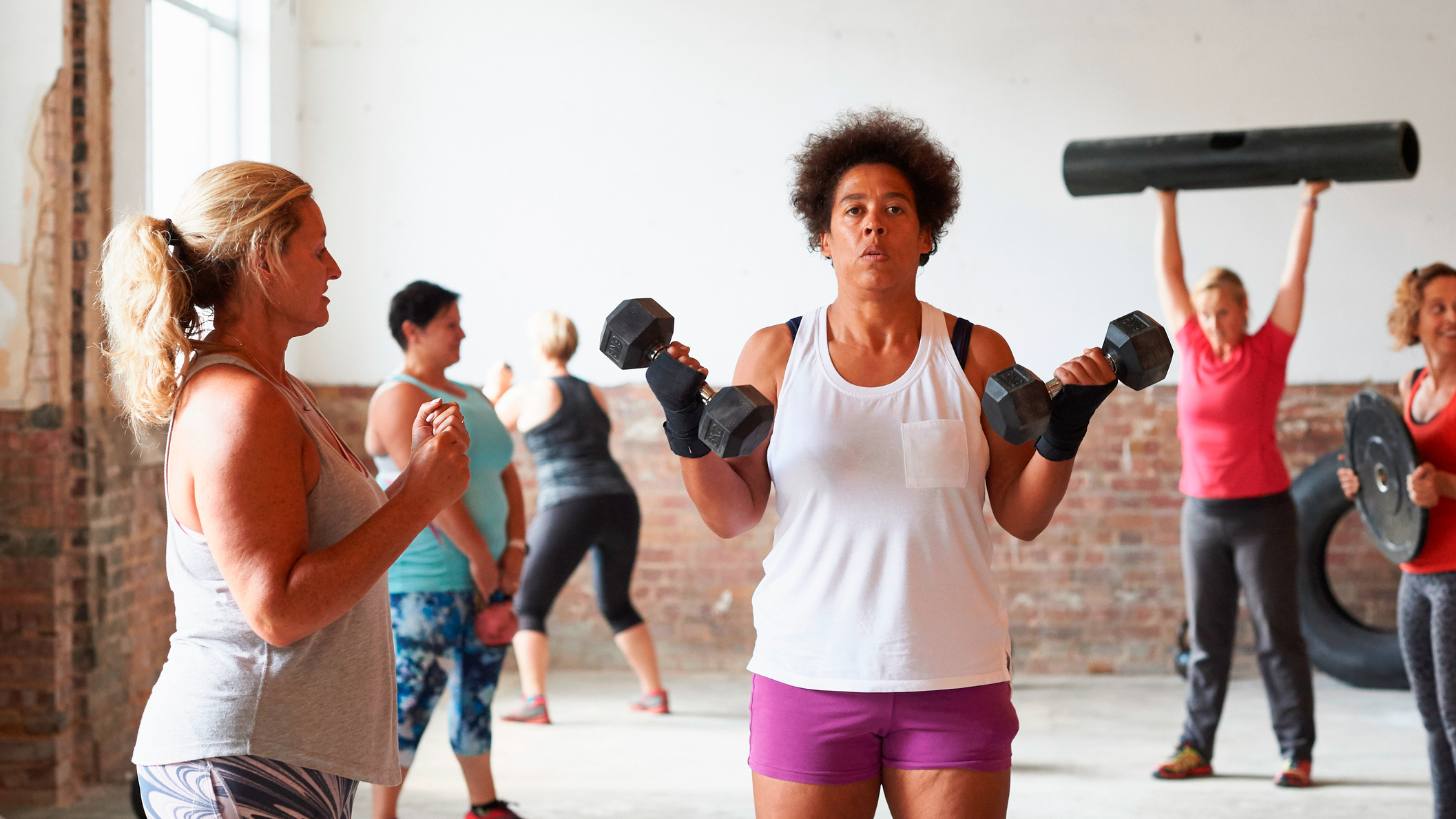
The classic biceps builder. Stand holding a dumbbell in each hand by your sides with your palms facing forwards. Curl the weights up towards your shoulders, keeping your elbows by your sides, then lower them slowly. Make sure to swap between biceps exercises and triceps exercises, such as kick-backs and dips, in different sessions.
More arms exercises to try
Beginner Workout FAQs
How many days a week should a beginner go to the gym?
Three is Forbes’s recommendation for beginners. “That’s less about recovery time and more about keeping plenty of options in the bag for when you reach the point where you need to do increase frequency to keep seeing progress. If you can’t manage three, two days a week will still get the job done. For those keen beans who want to do more, I don’t hold them back – do whatever frequency you want.
“The key with increasing or decreasing training frequency is to remember to keep overall training volume the same when possible. For example, if a client has 20 sets of total work for their quads in a programme and goes from training twice a week to four times a week, I’ll simply spread those 20 sets across four days.”
What should I do after using this routine?
“When someone has a bit of training experience, I like an upper/lower split,” says Forbes. “An upper/lower split allows you to spread the training load across the week. I’d usually go for a power-building set-up – think big, compound lifts done with low reps at the start of the week, then some higher-rep isolation work later in the week. This increases strength while you build some lean mass.
“With this type of set-up you can ensure that your muscles get exposed to the three key drivers of muscle growth – mechanical tension, muscle damage and metabolic stress – across each week. But you’ll also keep engaged by shifting the focus of the sessions across the week.”
Try scheduling in this upper-body workout and legs workout. Another great option is a pull/push workout plan, which typically involves one workout of push exercises, another of pull exercises and a final leg day, although our guide also includes a cross-body plan.
What if I want to improve one body part?
“To focus on a particular body part, you want to increase the amount of work that muscle is doing in a training cycle, known as the training load,” says Forbes. “In these situations, I opt for a higher-frequency set-up rather than adding in a training session specifically for that body part. It allows for a higher quality of work and higher work output.
“For example, if you were to perform flat bench presses, incline bench presses, dips and flyes, by the time you get to the dip you’ll have already activated the key muscles, accumulated fatigue and lactic acid, and caused some muscle damage. In a nutshell, you’re spent.
“In comparison, if I set up a training programme so that you perform flyes and dips on a lower body focus day, you’ll be able to use more weight. That means a greater training load for that muscle and a more frequent stimulus to grow and adapt.”
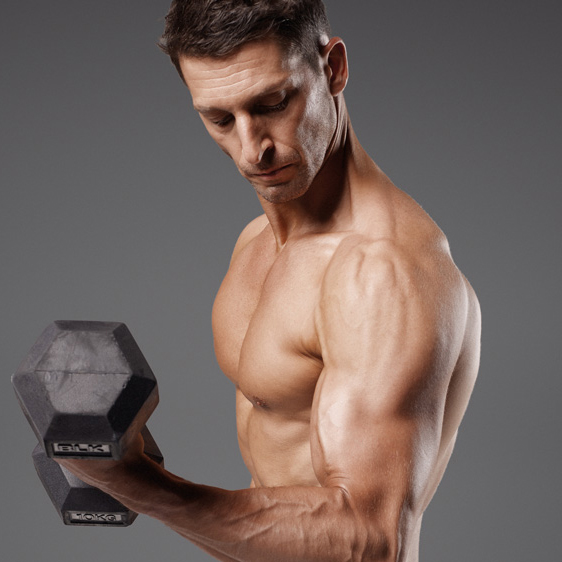
Joe Warner is a highly experienced journalist and editor who began working in fitness media in 2008. He has featured on the cover of Men’s Fitness UK twice and has co-authored Amazon best-sellers including 12-Week Body Plan. He was the editor of Men’s Fitness UK magazine between 2016 and 2019, when that title shared a website with Coach.
- Nick Harris-FrySenior writer
